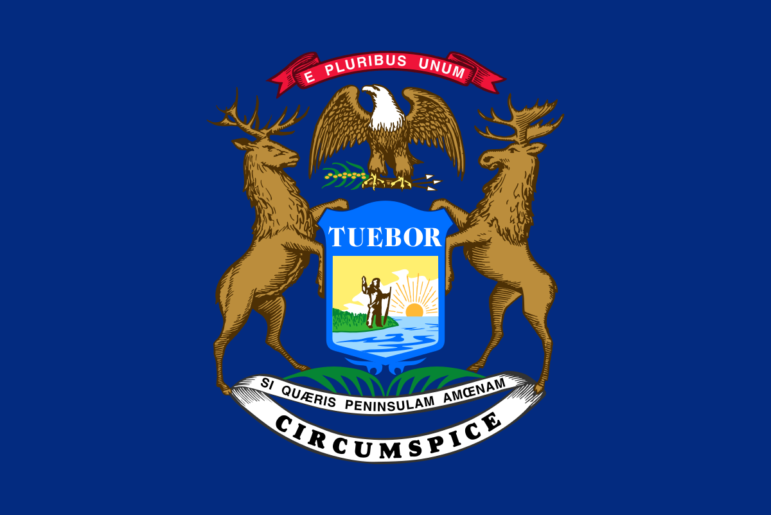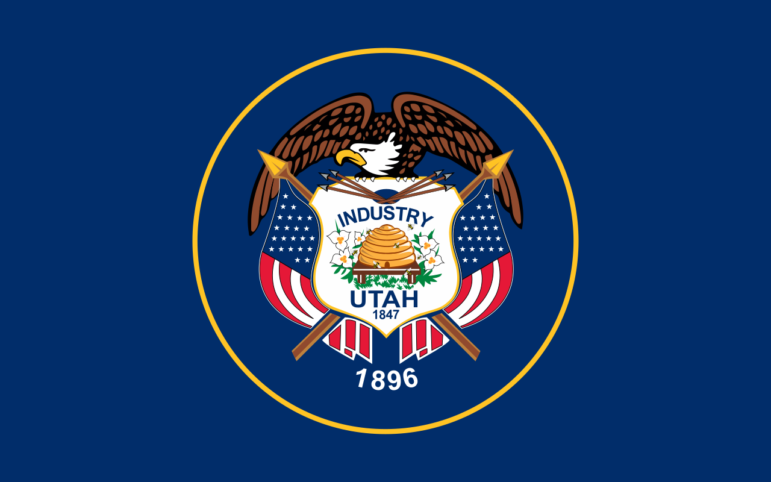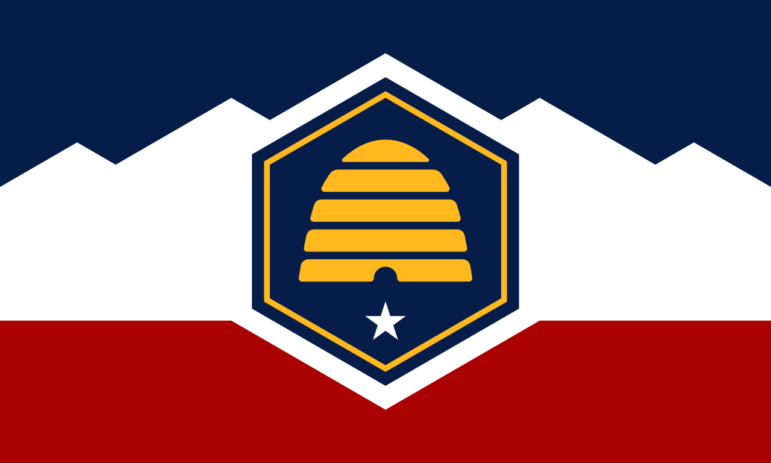
State of Michigan
Michigan’s state flag is based on the state’s 1835 coat of arms.By ANDREW ROTH
Capital News Service
LANSING – Step out onto your front porch and count how many state flags you see flying in the wind.
For many Michigan residents, the answer is likely zero, even at homes that proudly display the U.S. flag or a flag affiliated with their favorite college sports team.
That’s a problem, according to state Rep. Phil Skaggs, D-East Grand Rapids – and one that he hopes can be addressed with a new design.
“Michigan is a unique and special state, and we need to have a flag that itself is unique and special so that we can rally behind it,” Skaggs said. “A good flag with strong symbolism that’s meaningful to people creates a common sense of purpose. That’s something that we need in Michigan right now.”
The heart of the issue is that there is nothing that makes the current flag – which consists of the state coat of arms set against a plain blue background – stand out, Skaggs said.
“The current flag harkens back to 150 years ago when most state flags were simply what are called SOB flags: seal-on-a-bedsheet,” Skaggs said. “The seal on our flag makes sense as a seal, when it’s on a piece of paper or a podium, but it doesn’t make sense as a flag that’s flying at a distance.”
Michigan’s coat of arms dates back to 1835, according to the Michigan Department of State, and features a shield held by an elk and a moose. It includes the Latin phrases “Tuebor,” meaning “I will defend,” and “Si Quaeris Peninsulam Amoenam Circumspice,” meaning “If you seek a pleasant peninsula, look about you.” It also includes the national motto “e pluribus unum” which means “out of many, one.”
Skaggs intends to introduce a bill at the end of April to coincide with the current flag’s anniversary.
It would create a commission to create a design for the Legislature to vote on after taking public input and working with design experts.
There are five characteristics of a good flag, according to a 16-page guide: “Good” Flag, “Bad” Flag. The guide pulls from the expertise of 20 vexillologists (people who study flags) and vexillographers (people who design flags).
Those five elements are: simplicity, with the flag being simple enough for an elementary school child to draw it from memory; using only a few colors, preferably two or three that contrast with each other; including meaningful symbolism through images, colors and patterns; not using lettering or seals; and being distinctive enough to stand out from other state flags.
The flags of the United States, Canada, Japan, the United Kingdom, Togo and South Africa follow these rules, Skagg said.
People often don’t feel a sense of connection to the flag or view it as something they identify with, as evidenced by the lack of residents embracing the current design, Skaggs said.
“One of the ways that you can tell the flag lacks meaningfulness for Michigan citizens is that you rarely see it flown at a house, or on someone’s backpack, or their water bottle,” he said. “If you go to Chicago, you see that Chicago city flag everywhere, and it creates an incredible sense of civic pride. We just don’t see that in Michigan with our current flag.”
Skaggs said other states with ineffective flags are also beginning to change. Illinois, Massachusetts and Minnesota all have active or planned legislation to change the design of their state flags.
And Utah recently approved a new flag design, which Skaggs said “changes it from a very basic seal-on-a-bedsheet flag to one that really has meaningful symbolism for that state.”
It features a jagged white ribbon in the middle, representing snowy mountains, cutting into red rocks at the bottom and a blue sky at the top. In the center, there is a beehive (Utah is known as the beehive state) inside a hexagon, and it also includes a guiding star to represent Utah’s tribal nations.

State of Utah
Utah traditional state flag was redesigned.
State of Utah.
Utah’s new state flag is inspiring other states to take another look.